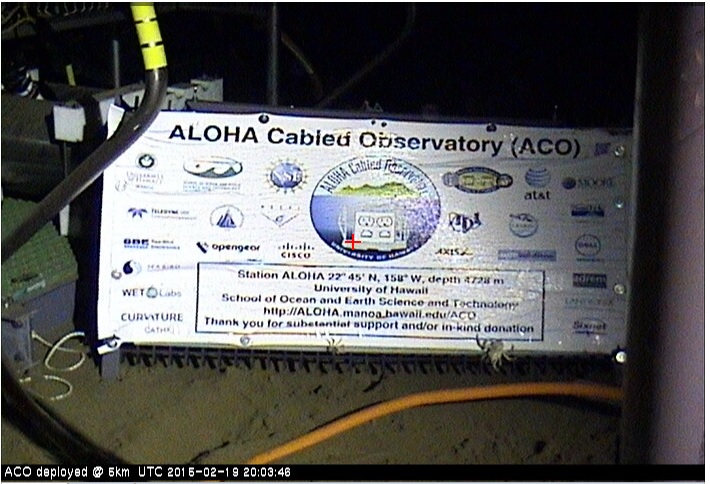Sixty miles north of the Hawaiian island of Oahu and three miles down to the ocean floor sits the ALOHA Cabled Observatory (ACO). Providing real-time oceanographic data through a retired and donated AT&T HAW-4 submarine fiber-optic cable, ALOHA station is the deepest working observatory of its kind, as well as the deepest power node on earth and the deepest location that’s connected to the Internet (so bring your laptop if you’re SCUBA diving around there). Utilizing Opengear technology to safeguard the continued availability of this unique underwater connection, the station includes a hydrophone and pressure sensor, along with instrumentation for measurement and communication of temperature, salinity, currents, acoustics, and video.
These instruments continuously capture and transmit data that is readily available to scientists and the public online in real-time, and includes observations such as the singing of humpback whales, video depicting the bizarre behavior of ocean-bottom life (for examples, an abyssal lizard fish’s attack on an aristeid shrimp, and even observations of new and unidentified species), and fascinatingly rapid shifts in ocean floor temperature. The station streams terabytes of data, and has enjoyed generous donations from a number of commercial enterprises which have provided the latest in networking and data management technology to help in managing and securing this valuable scientific information. Opengear is proud of the innovative use of its technology to maintain the underwater network and data management solution at work at ALOHA station, and of providing the observatory with its continued support of an important (and downright interesting) endeavor.
The ACO includes seafloor electrical outlets and Internet connections for use by attached scientific instruments. These deliver approximately 1000 Watts, 100 Megabits/second Ethernet, and one microsecond timing shared by eight user connection ports. And the cable connecting the ACO to Oahu? A full 237 kilometers long. On Oahu, the cable enters the Makaha Cable Landing Station, where equipment manages the power and communications. The streams of data are forwarded through the University of Hawaii backbone to its Manoa campus, and the ACO data center.
To implement the ACO network, two high availability pairs of enterprise grade SonicWALL firewalls were used to make two islands, at the AT&T Makaha Cable Landing station and at a SOEST data center. Because these are set up as a high-availability “failover pair,” we’re enabled to upgrade the firewalls without interrupting the data streams. The landing station and data center are connected via an IPsec VPN tunnel, allowing devices in the data center to reach the station and resources beneath the ocean via the VPN link. An integrated SSL-VPN enables secure remote access to the equipment from nearly any location in the world. The system fully adheres to Federal Information Processing Standards, and in most cases goes beyond the Department of Defense’s requirements for security of unclassified data. Full zone based deep packet inspection and active monitoring of all computers and network devices contribute to ACO’s network security. This active monitoring for network equipment health uses SNMP/ICMP/layer7 app tools together with profile-based intrusion detection. Inter-device links are also monitored for jitter, latency, and other path-related issues. Atop the ACO network is a highly reliable and extensible system for real-time control and data management, coordinating computers and storage devices at the Makaha station and the University of Hawaii to achieve, at minimum, three copies of each dataset, with at least two copies stored in separate physical locations in case of disaster
Physical access to the ACO can be made with a remotely operated vehicle sent from a research vessel on a lengthy cable, like the one (the size of a small car) that deployed and installed the ACO in 2011. Future planned upgrades, installed by such a vessel, will add capabilities for studying air-sea interactions, the carbon cycle as relates to climate change, abyssal ecosystems and more.
The ALOHA Cabled Observatory represents a unique use case for Opengear’s technology, where the flexibility, reliability and extensibility demonstrated by our equipment is truly able to help advance a worthy scientific cause and connect the world with an intriguing new frontier. We’re proud to provide a resilient and secure connection to this new underwater realm.




